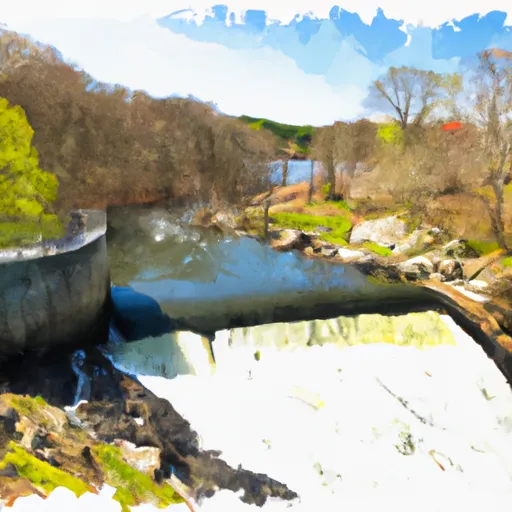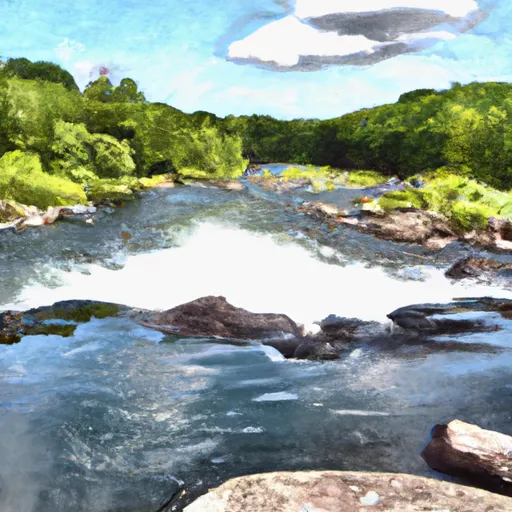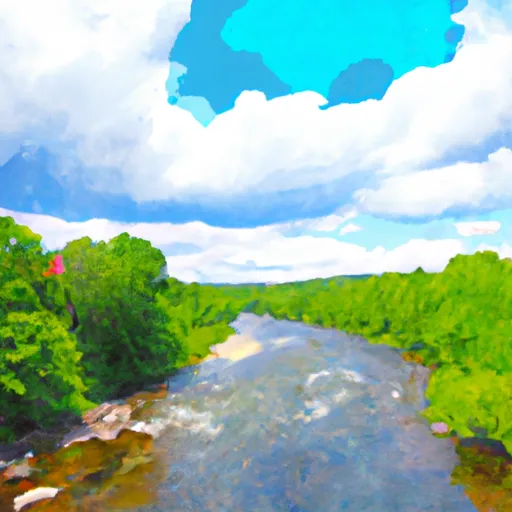Summary
Total streamflow across the
Farmington River
was last observed at
849
cfs, and is expected to yield approximately
1,684
acre-ft of water today; about 27%
of normal.
River levels are low and may signify a drought.
Average streamflow for this time of year is
3,123 cfs,
with recent peaks last observed
on
2011-08-30 when daily discharge volume was observed at
19,350 cfs.
Maximum discharge along the river is currently at the
Farmington River At Tariffville
reporting a streamflow rate of 546 cfs.
However, the streamgauge with the highest stage along the river is the
Farmington River At Unionville
with a gauge stage of 5.2 ft.
This river is monitored from 2 different streamgauging stations along the Farmington River, the highest being situated at an altitude of 180 ft, the
Farmington River At Unionville.
River Details
| Last Updated | 2025-12-26 |
| Discharge Volume | 1,684 ACRE-FT |
| Streamflow |
849.0 cfs
-62.0 cfs (-6.81%) |
| Percent of Normal | 27.19% |
| Maximum |
19,350.0 cfs
2011-08-30 |
| Seasonal Avg | 3,123 cfs |
River Streamflow Levels
| Streamgauge | Streamflow | Gauge Stage | 24hr Change (%) | % Normal | Minimum (cfs) | Maximum (cfs) | Air Temp | Elevation |
|---|---|---|---|---|---|---|---|---|
|
Farmington River At Unionville
USGS 01188090 |
303 cfs | 5.2 ft | -6.48 | |||||
|
Farmington River At Tariffville
USGS 01189995 |
546 cfs | 1.64 ft | -6.98 |
Seasonal Discharge Comparison
Maximum Streamflow Discharge
Streamflow Elevation Profile
The Farmington River is a river, 46.7 miles (75.2 km) in length along its main stem, which is located in northwest Connecticut with major tributaries extending into southwest Massachusetts. Via its longest branch (the West Branch), the Farmington's length increases to 80.4 miles (129.4 km), making it the Connecticut River's longest tributary by a mere 2.3 miles (3.7 km) over the major river directly to its north, the Westfield River. The Farmington River's watershed covers 609 square miles (1,580 km2). The river historically played an important role in small-scale manufacturing in towns along its course, but it is now mainly used for recreation and drinking water. The Farmington River Watershed Association is a non-profit organization for conservation and preservation of this river.
Headwaters for both main branches of the Farmington River, referred to as the East Branch and West Branch, are found in southwestern Massachusetts, though only the West Branch officially begins north of the Connecticut border. The West Branch rises at the outlet of Hayden Pond in Otis, Massachusetts. In 1994, a 14-mile (23 km) stretch of the branch was designated a National Wild and Scenic River. The East Branch begins in Hartland, Connecticut at the confluence of Pond, Hubbard and Valley Brooks. However, this branch has been impounded along the first 11 miles of its course to form the Barkhamsted Reservoir and Lake McDonough; it does not assume a particularly river-like appearance until it exits Lake McDonough in New Hartford, Connecticut. The East Branch and West Branch join in New Hartford, Connecticut just about one mile south of Lake McDonough. Upper reaches of the river flow mostly southward, but the river turns northward in Farmington, Connecticut and then runs mostly north and east until it flows into the Connecticut River in Windsor, Connecticut.

 Begins Below The Tailrace Of The Lower Collinsville Dam To The Route 187 Bridge
Begins Below The Tailrace Of The Lower Collinsville Dam To The Route 187 Bridge
 The Confluence With The Nepaug River To A Point 0.2 Miles Below The Lower Collinsville Dam Tailrace
The Confluence With The Nepaug River To A Point 0.2 Miles Below The Lower Collinsville Dam Tailrace
 New Hartford/Canton Town Line To The Confluence With The Nepaug River
New Hartford/Canton Town Line To The Confluence With The Nepaug River